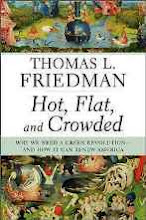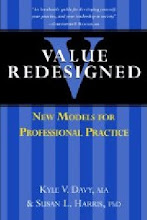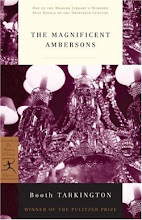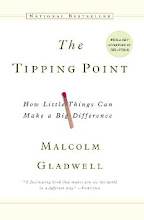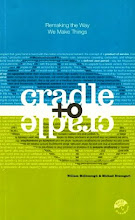
The finest piece of mechanism in all the universe is the brain of man. The wise person develops his brain, and opens his mind to the genius and spirit of the world's great ideas. He will feel inspired with the purest and noblest thoughts that have ever animated the spirit of humanity.
Alfred A. Montapert
True inspiration has its origins in many aspects of life, some more direct and immediate, others subtle requiring reasoning and discovery. Seeking inspiration is a primary tool for the creative process of an artist. In its purest form inspiration is an energy that stimulates the mind contrary to the established path of thought and consciousness, allowing new paths to be explored in a mind expanding experience. These new pathways stimulate neurons that alter perception and reasoning to the degree that revelations occur. Consistent with any life force, creativity is energy that ebbs and flows in intensity and magnitude providing periods of abandonment and periods of abundance. The challenge of the artist is to continuously mine copious amounts of inspiration to fuel and sustain the creative process over extended periods of time.
Understanding the need to accumulate creative inspiration is the easy part, while capturing the source of inspiration in sufficient quality to sustain innovation is a much more elusive endeavor. Each individual establishes a personal methodology for acquiring inspiration. For some inspiration is gained while exceeding personal limits of endurance while hiking mountain peaks, while other look inward to in contemplation and meditation, but everyone one is unique in the method of seeking and quality of inspiration required to function in the world. Admittedly some in society are devoid of creative pursuit never finding the need to challenge their perception of life, comfortable to reside in a familiar environment, always resistant to change.
One of my fundamental sources of creative inspiration is devouring an exceptionally wide universe to subjects and topics. Board exposure to the arts, literature, science, philosophy, engineering, design, geography, culture and history dumps an enormous amount of information into the crucible to be dissected and broken down to its fundamental elements. These rendered pieces of reasoning and thought bump into each other forming new combinations of connections and postulations needing exploration. Each discovery of a new source of information is savored as it adds new favors and insights to the crucible
The recent board meeting conducted in Montreal provided me a rare opportunity to find a wealth of creative energy which has fueled me for the last month and conceivably for many months into the future. The source of the inspiration is the other members of this nation board from which I participate with. Individually each one is what I would consider brilliant and driven toward pioneering leadership in new and emerging areas of practice and theory. They are all within their intellectual prime and are recognized internationally as the steward of a movement. This particular board has a focus on environmental infrastructure, so each of these diverse thinkers is committed to environmental change on a global scale. The most rewarding of all is than these individuals are not just committed to change they are actively redefining the world as we know, which adds to the inspiration for me. Observing and discussing how one takes creativity energy and effectively applies it with success to real world problems places creativity in a powerful context.
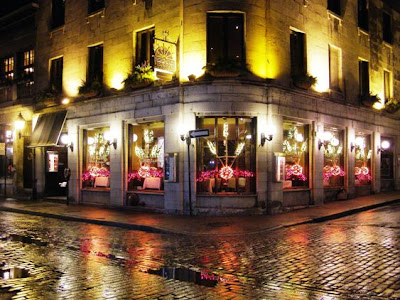 Our Meeting Place, Old Town, Montreal. Phot by Mr. Blue
Our Meeting Place, Old Town, Montreal. Phot by Mr. BlueArriving to the hotel early I run into Scott in the lobby and decide to grab a late lunch around the corner at a small French bistro. As I order a glass of wine, we catch up on the intervening months since our last board meeting. Scott is one of the world’s leading authorities in industry ecology, a new science which has emerged as the focus of considerable interest in urban planning circles. Industrial ecology is an interdisciplinary study of technology, society and ecology that sees industrial systems (for example a factory, an eco-region, or national or global economy) as being part of the biosphere. Industrial ecology is the shifting of industrial process from linear (open loop) systems, in which resource and capital investments move through the system to become waste, to a closed loop system where wastes become inputs for new processes.
Unfamiliar with the concept Scott explains, the industrial metabolism, that is, the flows of energy and materials through socio-economic structures, is seen as the major driver of environmental burdens and threats to sustainability. Technology in its function of transforming energy and materials into goods and services, and inevitably also into wastes and emissions, is seen as a key to more sustainable solutions. As we eat lunch Scott receives a call about an industry swap meeting he organized before coming to Montreal. He is excited to know that the event was a huge success requiring the participants to be run out of the meeting room after running over by three hours. The focus of the meeting was to allow industrial manufacturers in the area to swap and trade post manufacturing waste and excess materials. With a sense of glee while concluding his call, Scott informs me the swap meet resulted in thirty five trade agreements which represents waste diversion of millions of pounds of materials now to be looped back into the manufacturing process of products and services.
As we finish lunch another board member, Steven is strolling past the restaurant on the cobblestone street. We tap on the window to get his attention and wave at him encouraging him to come in and join us. Smiling Steven nods while heading toward the door. Warmly we greet our old friend as he sits at the table. The small talk covers the usual topics as we catch up until we begin to discuss professional activities. Steven indicates that he is in the process of collecting photos for a new textbook on Biophilia. I ask Steven to define Biophilia and he begins with Harvard biologist Edward O. Wilson, PhD, who coined the term biophilia in his book by the same name in 1984. Dr. Wilson argued that human beings have an innate and evolutionarily based affinity for nature. He defined the term as “the connections that human beings subconsciously seek with the rest of life.”
Excited to share a conversation about his passion, Steven continued with Kellert, who co-edited The Biophilia Hypothesis with Wilson in 1993 and more recently wrote Building for Life in 2005. In which defining the concept of biophilia as “a complex of weak genetic tendencies to value nature that are instrumental in human physical, material, emotional, intellectual, and moral well-being. Because biophilia is rooted in human biology and evolution, it represents an argument for conserving nature based on long-term self-interest.”
As his hands begin to moves with greater exaggeration Steven moves on to Judith Heerwagen, PhD, a psychologist whose research has focused on the relationship between buildings and psychological well-being and who has written widely on the subject, suggests Biophilia, has evolved as an adaptive mechanism to protect people from hazards and to help them access such resources as food, water, and shelter. In a friendly challenge knowing that Steven will take the bait, I ask him why Biophilia matters.
Animated he begins pounding the table, stating we should care about biophilia in building design for two primary reasons. First, it is becoming increasingly well demonstrated that biophilic elements have real, measurable benefits relative to such human performance metrics as productivity, emotional well-being, stress reduction, learning, and healing. And second, from an environmental standpoint, biophilic features foster an appreciation of nature, which, in turn, should lead to greater protection of natural areas, eliminate pollution, and maintain a clean environment. The discussion culminates is a jovial round of laughter as we chide Steven that he needs to seek professional help to deal with his obsession.
Looking at his watch, Scott says that Michael and Rick two other board members were going to grab a taxi together and should be in route from the airport. He flips open his cell phone calling Michael to get an idea of how long it would be before they arrived at the hotel and suggests that they drop off the luggage and head to our restaurant to have a cocktail with the crowd. About twenty minutes later they stroll in the restaurant bundled in thick coats to protect them from the cold. As the handshakes and smiles continue, I suggest we move to a larger table in front of a large rustic stone fireplace with an inviting roaring fire. As we settle in and order a round of cocktails, Michael declines and asks for some hot tea.
Looking much thinner than the last board meeting, Michael indicates that stomach still has not recovered having just returned from Lomé the capitol of Togo a country in West Africa bordering Ghana. Since the last board meeting, Michael resigned his position at one of the greenest development companies in the nation and started his own green venture capital company. After discussing the reason for his transition, the conversation turns to why he was in Africa. In an absolutely fascinating story, Michael explained how his new company is developing a distributed green power infrastructure for the country using biomass energy generators.
To many people, the most familiar forms of renewable energy are the wind and the sun. But biomass (plant material and animal waste) supplies almost 15 times as much energy in the United States as wind and solar power combined—and has the potential to supply much more. There are a wide variety of biomass energy resources, including tree and grass crops and forestry, agricultural, and urban wastes. It is the oldest source of renewable energy known Biomass is a renewable energy source because the energy it contains comes from the sun. Through the process of photosynthesis, chlorophyll in plants captures the sun's energy by converting carbon dioxide from the air and water from the ground into carbohydrates, complex compounds composed of carbon, hydrogen, and oxygen. When these carbohydrates are burned, they turn back into carbon dioxide and water and release the sun's energy they contain. In this way, biomass functions as a sort of natural battery for storing solar energy. As long as biomass is produced sustainably—with only as much used as is grown—the battery will last indefinitely.
From the time of Prometheus to the present, the most common way to capture the energy from biomass was to burn it, to make heat, steam, and electricity. But advances in recent years have shown that there are more efficient and cleaner ways to use biomass. It can be converted into liquid fuels, for example, or cooked in a process called "gasification" to produce combustible gases. Current agricultural practices in Togo is to burn the fields after harvest to remove the stubble, which is a major contributor to the poor air quality of the county while releasing huge amounts of carbon dioxide. Michael’s plan was to collect and use this agricultural biomass to fuel the power generators.
After discussing the culture, economy, geopolitical influences, government and obstacles in Togo the conversation turns to the financial model Michael was proposing to fund the five hundred million dollar investment. In a brilliant plan, Michael using a World Bank loan will sell on the international market the carbon credits generated by the biomass energy recover to pay the investors since biomass energy is carbon neutral. After five years of operation the biomass energy will generate sufficient carbon credits to pay off the investors, allowing Michael’s to turn over the entire national power infrastructure to the Togo government. I sat there in total amazement thinking about how Michael was poised to take a country of over eleven million residents making them independent of oil using sustainable power in a matter of five years. I always talk about changing the world, but here is someone that is doing it. What an inspiring discussion that was for me.
The group turns to Rick to ask how his architectural practice is was proceeding. Rick is a principal in a firm that specializes in Biomimicry which is a relatively new science that studies nature, its models, systems, processes and elements and then imitates or takes creative inspiration from them to solve human problems sustainably.
In the 1997 book, "Biomimicry: Innovation Inspired by Nature", Janine M. Benyus introduced the concept. We spend some time discussing the numerous examples of men and women who are studying some of nature's most wondrous achievements including photosynthesis, natural selection, self-sustaining ecosystems, etc., and then, "... consciously emulating life's genius," to improve manufacturing processes, create new medicines, change the way we grow food or even harness energy. Rick explains that Biomimicry principles instruct us to: build from the bottom up, self-assemble, optimize rather than maximize, use free energy, cross-pollinate, embrace diversity, adapt and evolve, use life-friendly materials and processes, engage in symbiotic relationships, and enhance the bio-sphere. By following these principles, you can create products and processes that are well adapted to life on earth.
I look around the table and realize that the entire board is present with the exception of Dan. We decide to call Dan see if he wants to join us in front of fireplace. Ten minutes later the board of directors is complete as Dan opens the door and heads toward the table. With a close clipped beard of salt and pepper, Dan is the original hippy who decided to join the establishment in order to make a difference. Dan’s area of expertise is environmental law and his firm represents a dozen of the most recognizable environmental nonprofits in the nation. This board is just one of more than ten boards he is a member of. Recognized as a brilliant thinker, Dan is a voracious reader of science and technology journals providing him an informed opinion in a vast array of technical subjects.
As a lawyer Dan always has the final say on official opinion and enjoys the mantel of devil’s advocate. He has become the ring leader of the board. Many times during past board meetings he has spoken about his crazy Uzbekistan clients that he had to entertain. While ordering a glass of vodka, Dan makes another reference to drinking vodka with a couple of friends in Moscow. I finally decide to ask Dan what the hell he was doing in Russia and with that Dan revealed his early work in the law firm before he was partner.
Apparently his law firm was hired by the newly formed Uzbekistan government after the fall of Russia to negotiate leasing of the oil and mineral resources of the county to western investors. The firm’s senior partners were experienced in the land title issues but needed someone with an environmental background to work through the regulatory requirements. So as a budding attorney, Dan volunteered to head to Russia and learn international environmental law. As Dan is explaining the complicated process of working during the formation of the new government, I suggest that the environmental regulations were probably lax during those early days. To my surprise Dan says that since the government was being formed they allowed the first environmental laws to be write by University professors and as a result the newly written laws were so of the most restrictive and complicated in the world. Under Uzbekistan law any lease holders were liable for all past environmental sins and were required to correct them. Since the overriding environmental mitigation was so costly that no one would be able to sign the lease agreements. Dan would work with the government to structure very complicated leases which would manage some environmental restoration early, but the more onerous restoration would be tied to future lease revenues.
His stories are filled with the colorful wild characters, wide open emergence of organized crime, shady backdoor agreements and a party like Wild West frontier. As the stories flow I take the opportunity to sit back a look at the group around the table, each individual an accomplished passionate professional in the peak of their career. Each one a wealth of knowledge and experience, each one an inspiration. Collectively, they are a group which is capable of changing the course of history. I am privileged and honored, if not a little intimidated to be a part of this group of friends. Knowing that these moments of true inspiration are fleeting, I drink in the joviality and friendship while sitting around a roaring fireplace in a beautiful restaurant while the snow blows past the windows. In a few days we will be once again scattered to the four corners of the world, experiencing new stories to share the next time we meet. Until we meet again I shall reach repeatedly into this cradle of inspiration.
Edwin H. Friedman













